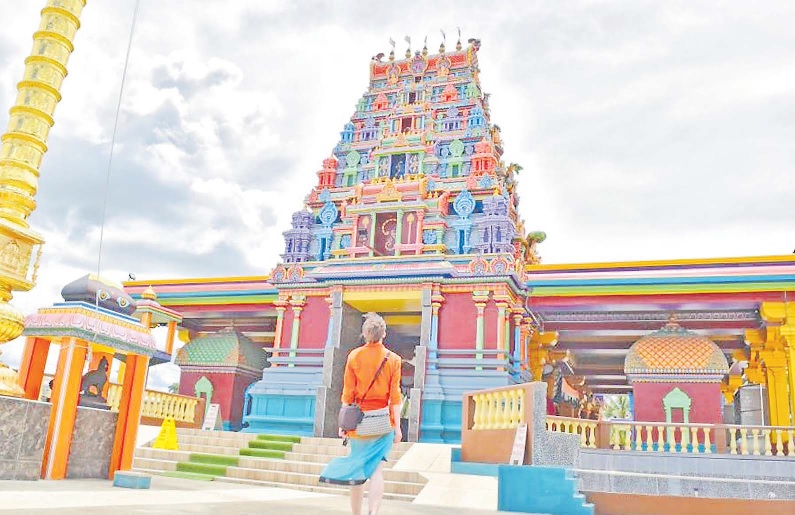Although Fiji’s tourism is under the impact of COVID-19 and a series of recent hurricanes, it has the resilience to bounce back when the condition becomes normal.
Hopes have been raised by the arrival of the first dose of COVID-19 vaccination in the country.
I hope tourism will bounce back with a bang in the near future.
The popularity of Fiji as one of the world’s best tourist spots in the South Pacific is not hidden, but the Ministry of Industry, Trade and Tourism under Fijian Tourism 2021 plan concentrates on stimulating product diversification and development across Fiji to explore the potential of alternative or niche tourism.
Under that it explores ‘alternative forms of tourism such as cultural [Tourism]…. Fiji being a multicultural and multi-religious country can capitalise on these strengths to explore niche forms of tourism such as cultural tourism, halal tourism and culinary tourism which can be complemented by direct flights to Singapore and Shanghai’ (Fijian Tourism 2021, 1st consultation, 16th Feb 2017).
Visitors have the opportunity to visit different revered churches, mosques, Sikh gurdwara, Hindu temples and other religious monuments in the country.
A nation having a pilgrimage site is an asset for religious tourism or faith tourism, whereby ‘people of faith travel individually or in groups for reasons related to religion or spirituality in their quest for meaning.
It could be under pilgrimage, missionary, leisure purposes’ (Jongmeewasin, 2015).
It is claimed by many that religious tourism is one of the oldest forms of tourism to the concept of pilgrimage and the fact that this phenomenon has been going on for thousands of years (cited by Sledge, 2017).
The objective to visit these religious places is usually based on religious purpose, as often having aspirations would get fulfilled, and this will provide solutions to their problems.
The spiritual attachment to the deity or the destination of faith and belief, attract the worshippers and visitors, from the domestic and overseas tourists.
It attracts pilgrims who travel to pay homage to the sacred place.
Faith towards a site is a personal matter, but religious tourism helps generate income, visibility and creates the nation’s popularity.
It comes with a responsibility to protect and conserve the site, not just for worshippers but also for visitors to pay homage to a religious site.
The safety and security of the worshippers is also another significant issue.
This article endeavours to explore only a few religious sacred sites due to space limitation, although Fiji is enriched with numerous religious sites that can lift Fiji’s heritage, culture and can be an asset to its religious tourism.
Revered sites
The Republic of the Fiji Islands is a multicultural island nation with cultural traditions of various parts of the world. It possesses many churches, Sikh Gurdwara, various temples and sacred buildings of other religions, that are highly popular religious sities and many devotees visit them regularly. All of them are equally admired by devotees, but I would like to name a few. First, the Naag Mandir (Snake temple) in Labasa. This site is located at Nagigi 12 kilometres northeast of Labasa Town. Mostly, Hindu devotees gather here in numbers during special occasions to pray and seek blessings during Maha Shiv Ratri, Naag Panchami and many other Hindu religious festivals. Although many claim that there is no scientific evidence of this stone has been revealed, but Hindu devotees believe in the power of this stone that has grown over the years and is expected to grow further. Miller (2008) PhD thesis stated ‘Indo-Fijian Hindus located divinity in various self-manifested phenomena (svayambhu), such as rock formations or other geologically formed objects that resemble deities or their associated symbols. These objects, believed to be naturally invested with the presence of God, are often moved into temples or, in extraordinary cases, become temple sites themselves. The most famous example is Fiji’s only Hindu pilgrimage site (on a modest scale), the Sanatani Naag Mandir (‘Snake Temple’) near Labasa, built around an impressive rock outcrop that resembles a hooded cobra’. This large cobra-shaped stone known as Naag Baba (the Snake God or Cobra Rock), that believed in the power of healing and fertility. The second one is Sri Siva Subramaniya Temple, Nadi, as this temple at Nadi is the largest Hindu temple in the South Pacific. Thousands of Hindu devotees come to Nadi to take part in the annual thaipoosam thirunal (FT, 19th January 2014). It was initially constructed in 1926 and then re-designed and re-constructed in 1986. This is a popular site for all tourists and cruisers often visit this revered site. It has amazing architecture and implies a proper dress code to enter the temple.
Conclusion
Religious tourism is divided into the following categories, pilgrimages, missionary travel, leisure vacations, faith-based cruising, crusades, conventions and rallies, retreats, monastery visits, guest stays, faith-based camps and religious tourist attractions (Diverse Beliefs, 2012). This tourism can become commercially viable when the tourist is provided with the holistic tourism experience; need skilled marketing technique; developing infrastructure to stimulate religious tourism; minimisation of
environmental impact and maintain the ecological balance; scrutiny of religious trusts; cost of religious tourism product; improved linkages to religious destinations; and similarly the reasons that stimulate religious tourism varies from to express gratitude, confess sin and to perform a vow; to achieve social and spiritual salvation; to commemorate and celebrate certain religious events; to enhance ones knowledge; to ensure peace and harmony (Kapur, 2018). The potential of religious tourism in Fiji should therefore not be underestimated, so this type of tourism can also be strategically worked out to draw visitors to Fiji
after the normalisation of the situation.
- Dr Sakul Kundra is an assistant professor in history at Fiji National University. The views expressed are his own and not of this newspaper or his employer. For comments or suggestions, email. dr.sakulkundra@gmail.com



